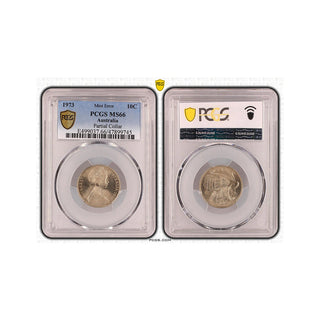1973 Partial Collar Error 10c Graded MS66 by PCGS.
A partial collar error occurs when the coin blank is not fully engaged with the collar die during striking. This can happen if the blank is not properly aligned or if the collar die is not positioned correctly.
As a result, only part of the coin's edge is given the standard reeding, and the rest of the edge may have a lip.
A coin blank is placed in a collar die before being struck, which helps to create the coin's edge and shape. If the blank is not properly positioned within the collar, it may not fully engage with the die.
The part of the coin that does contact the collar die will receive the reeding, but the rest of the edge will be different. The lack of full engagement can sometimes create a visible raised lip along the edge of the coin where the collar did not fully engage.
1973 Partial Collar Error 10c Graded MS66 by PCGS.
A partial collar error occurs when the coin blank is not fully engaged with the collar die during striking. This can happen if the blank is not properly aligned or if the collar die is not positioned correctly.
As a result, only part of the coin's edge is given the standard reeding, and the rest of the edge may have a lip.
A coin blank is placed in a collar die before being struck, which helps to create the coin's edge and shape. If the blank is not properly positioned within the collar, it may not fully engage with the die.
The part of the coin that does contact the collar die will receive the reeding, but the rest of the edge will be different. The lack of full engagement can sometimes create a visible raised lip along the edge of the coin where the collar did not fully engage.


